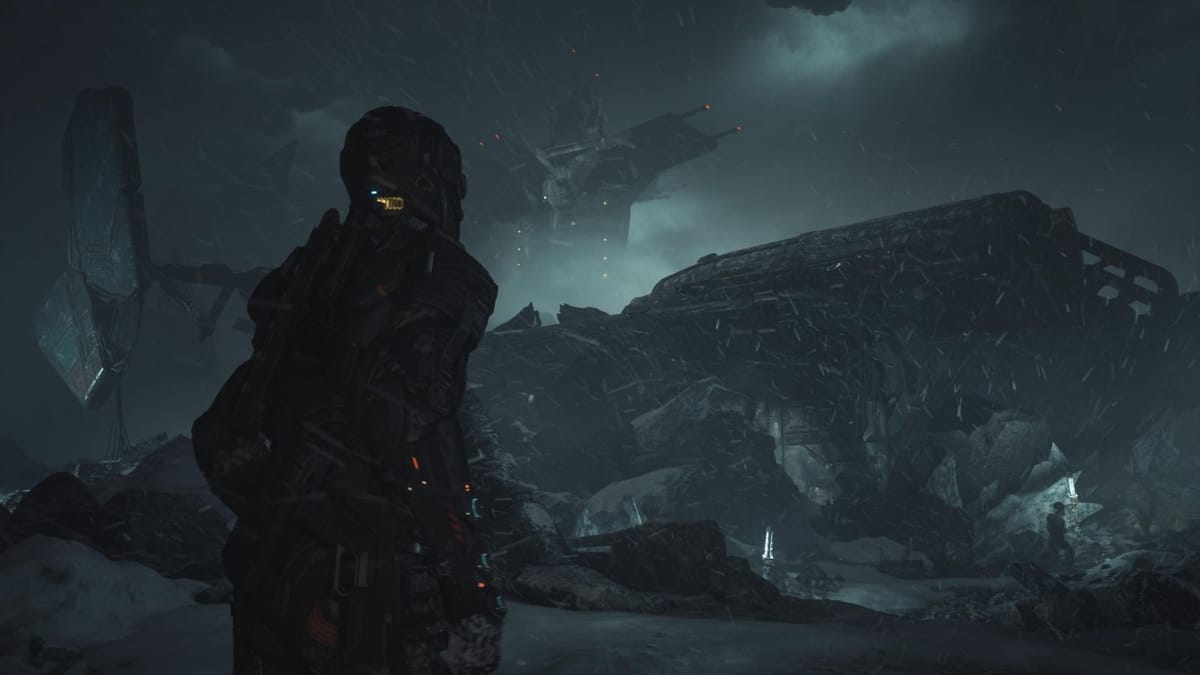
Jacob Lee, a contracted transport carrier, has been wrongly imprisoned in Black Iron Prison, a maximum-security jail located on Callisto, one of Jupiter’s dead moons. Soon after his arrival all Hell breaks loose as both the prison and Callisto are quickly overrun by grotesque mutations. Desperate to escape, Lee fights his way through the quickly deteriorating prison, while attempting to unravel the mystery behind the sudden outbreak. The Callisto Protocol’s story is simple and mainly takes a background until the latter half of the game, but never becomes much more than an excuse to launch Jacob into what could aptly be titled “a series of unfortunate events”.
Seriously, nothing goes right for this guy. What should be a rather straightforward trek becomes a 10-hour tour of the entire facility and everything beneath it. From a gameplay standpoint, I understand this, as it is an excuse to throw the player into new areas and prevent the game from ending in an hour. Still, the sheer amount of bad luck Jacob experiences during his journey becomes almost laughable.
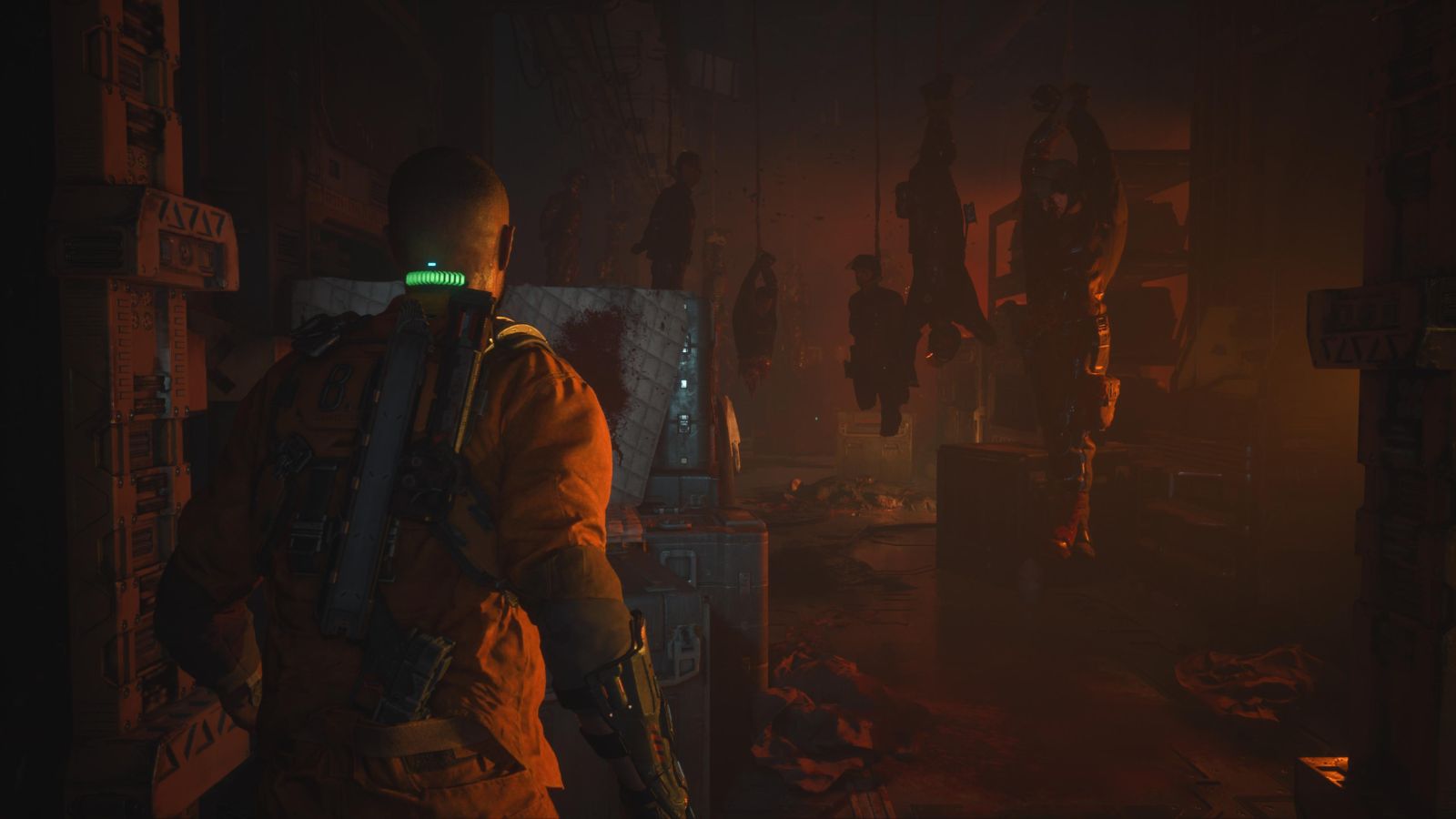

That said, I am almost certain that the story is not why players will pick up this game. The Callisto Protocol is survival horror at its heart, although it teeters more toward straight up action during the final couple of hours, which may be disappointing to some players. The game is focused on combat and is specifically tailored to provide you with a series of brutally challenging set pieces. Combat is a unique combination of dodging and melee attacks with some gunplay thrown in. Lee has a decent arsenal at his disposal along with a gravity-based weapon, the GRP, which can be used to pull enemies toward him or to launch enemies into environmental hazards.
Ammunition is hard to come by, as Protocol fully expects players to get up close and personal with the creatures they encounter. Fights are tense, especially when more than one enemy is involved, and learning how to quickly take down enemies and how to separate groups is essential to survival. Dodging is the first skill you must master, as there is no way to complete the game without understanding this core mechanic. Enemies attack quickly and can take a beating, with each having a much larger pool of health then expected from this type of game. Fights are a combination of dodging incoming attacks, melee attacking during openings, and popping off a round or two when possible. Toss in the GRP and its many uses and you have a bit more in-depth combat than what is first expected, although it can be a bit tough to master.
The GRP is the most useful tool to thin herds of enemies before launching an attack and players should become familiar with how to best use it, but it has an extremely small pool of power before needing either a battery to recharge it or the player waiting around for a long time for it to recharge on its own. To counteract this the GRP battery levels and recharge rate can be slightly upgraded, but I will get into upgrades a bit later. Using the GRP, you can pick enemies off quietly, launching them into instant death environmental hazards or, in a pinch, you can use it to push back attackers while you focus on one primary target.
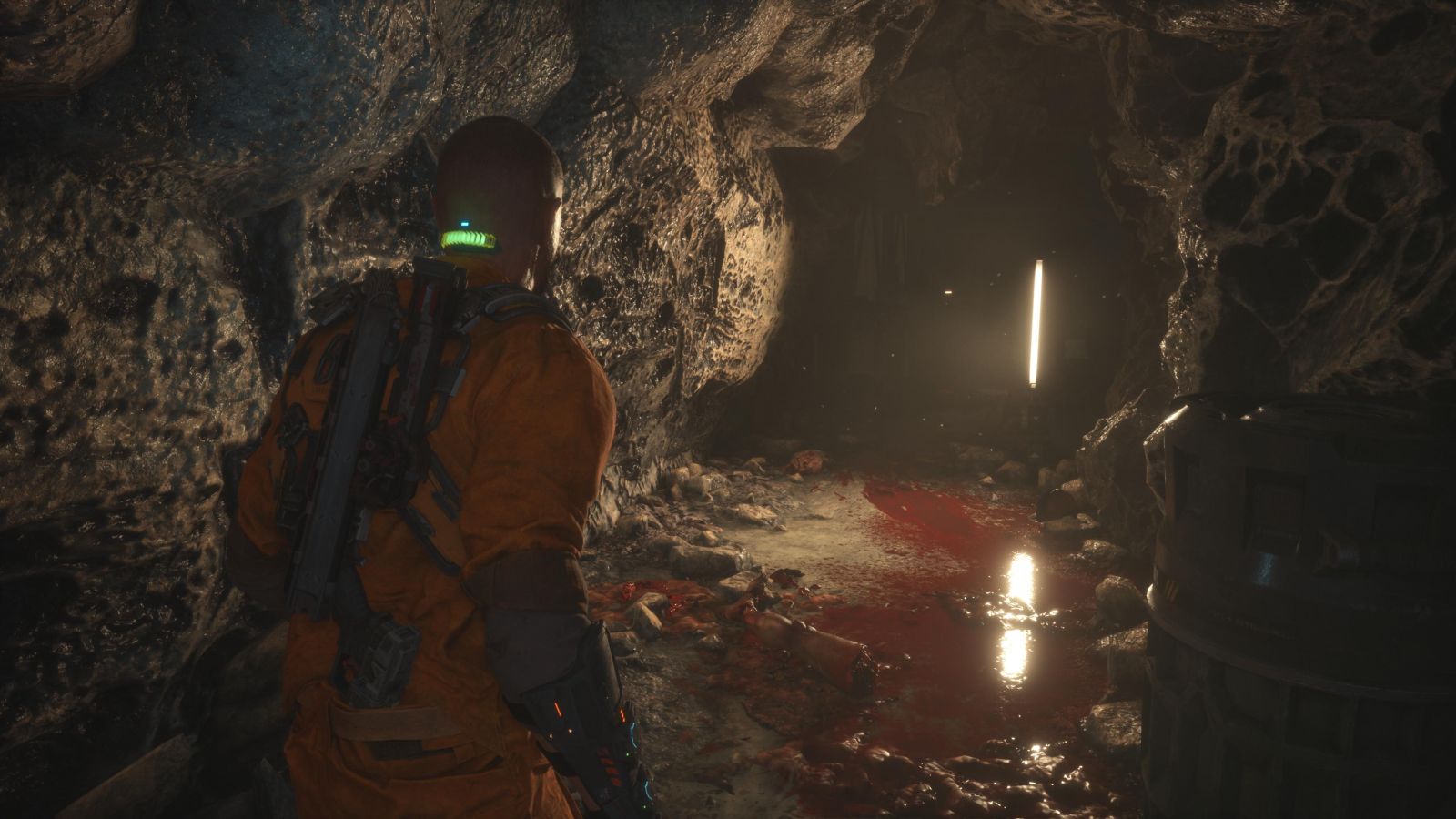
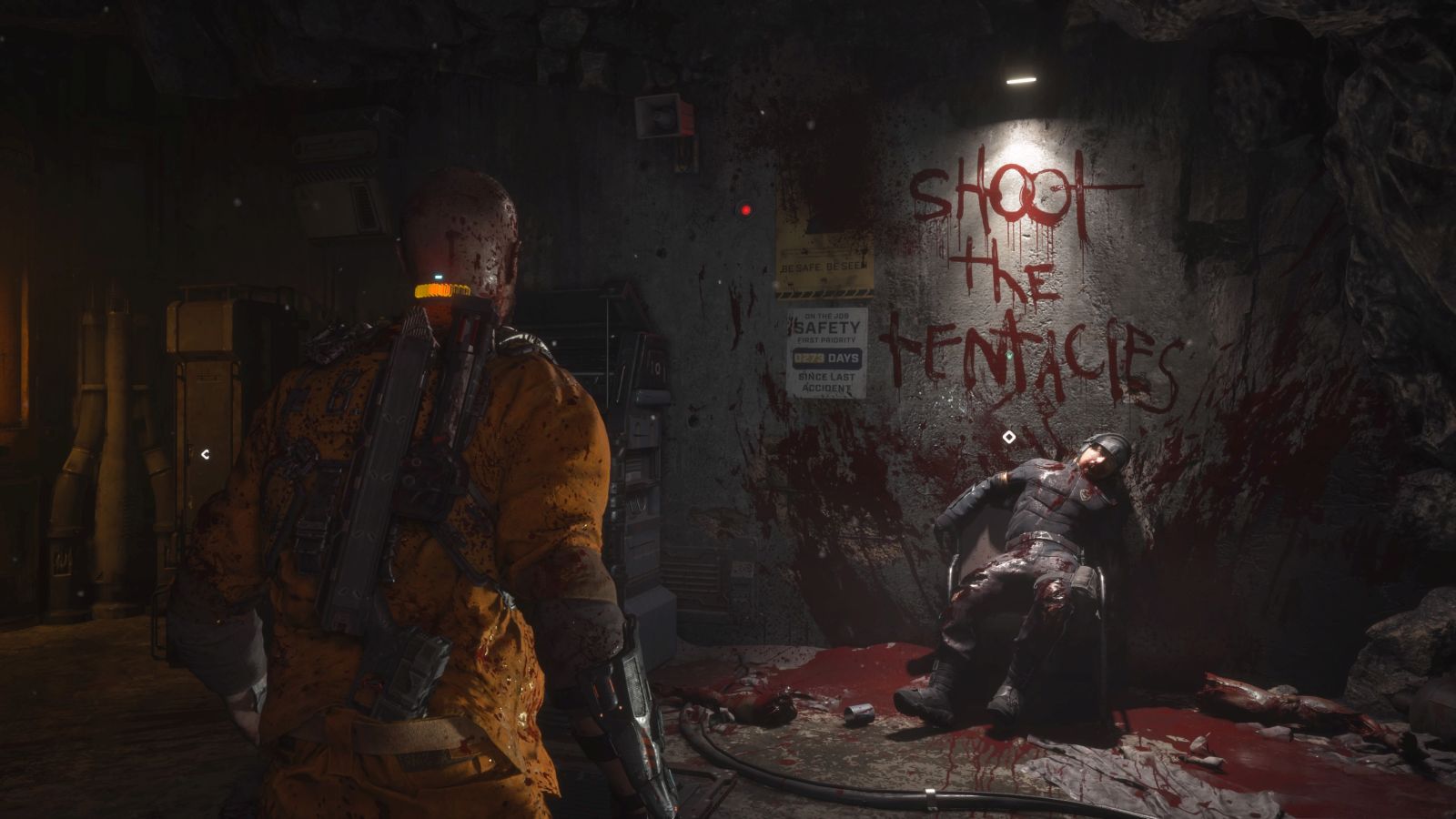
Despite your best efforts, you will die – a lot. The Callisto Protocol can be brutally hard, and most players will find themselves becoming annoyed with the creatively grotesque – but long-winded – death scenes when they are witnessing them for the 10th time while attempting to defeat a particularly difficult area. I highly recommend playing through on the easy setting on your first playthrough, as it still provides quite a challenge but gives you a better chance at mastering the combat. You can then take those skills into higher difficulty levels.
You cannot play The Callisto Protocol and not think of Dead Space, and the game does a great job of invoking that uneasy feeling you had when exploring Dead Space’s world. Unfortunately, the linear level design does not particularly mesh well with a mostly absent story, so no matter how often the location changes, the player will still grow a bit bored from the repetitive nature of following a set path, participating in a few fights, then repeating. This is the game’s biggest flaw – ultimately, it becomes a bit of a slog. To make matters worse, there is no indicator as to where to go next, and often you backtrack through areas, so it is easy to become lost.
That said, I did enjoy The Callisto Protocol, especially for the first half or so when it was more focused on keeping things tense and enemies were a greater threat due to your uneasiness with the fighting mechanics and lack of upgraded items. During the latter half, the game begins to crumble under its own weight, focusing far too much on difficult mob or copycat boss fights and losing much of the tension that came from not knowing what to expect. Jacob moves slowly, turns slowly, and switches weapons slowly which further adds to the frustration that stems from late game fights. Early on the slow movement may have helped add tension, but it makes end game boss fights and mob fights far more difficult than they should be.
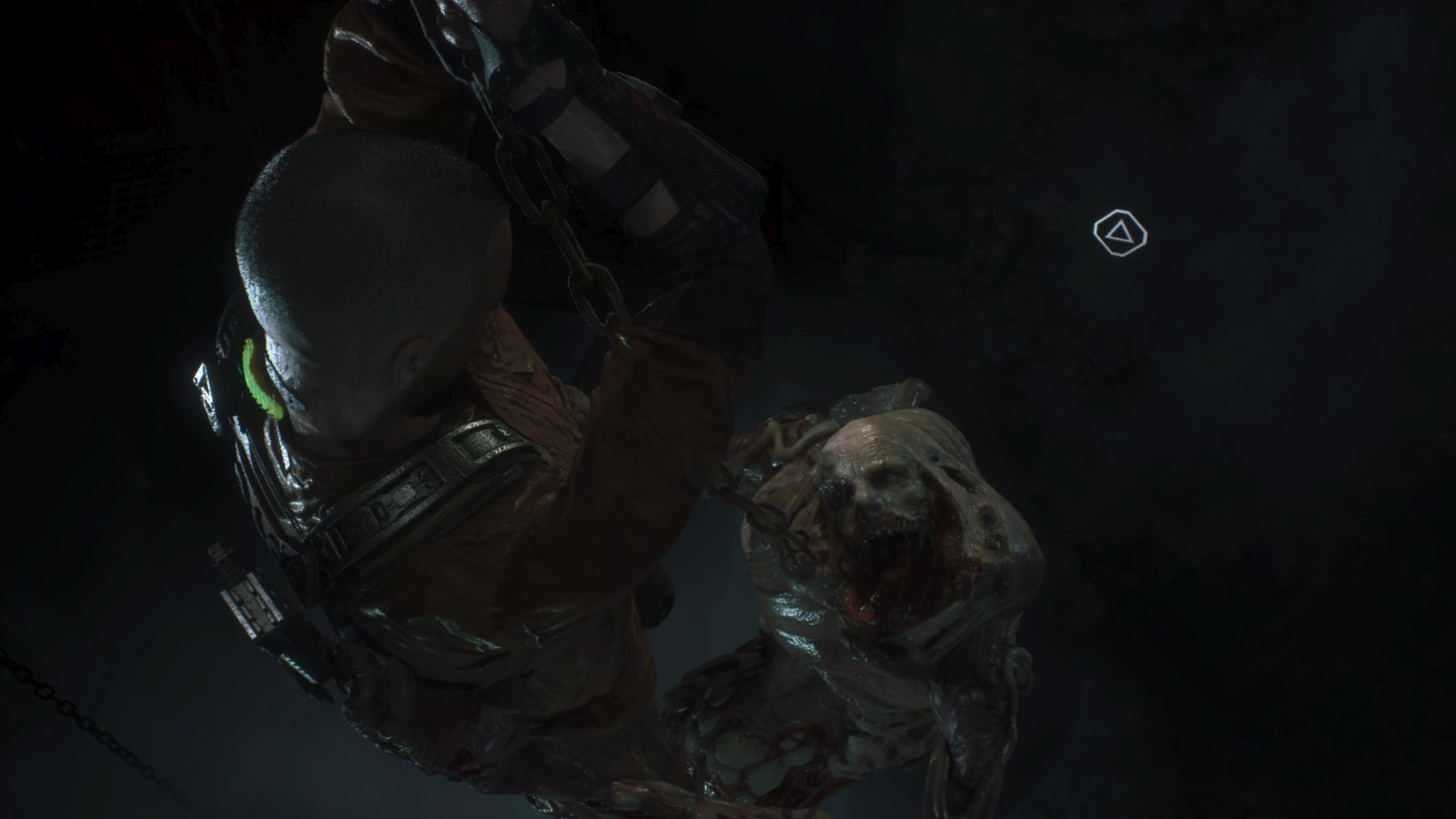
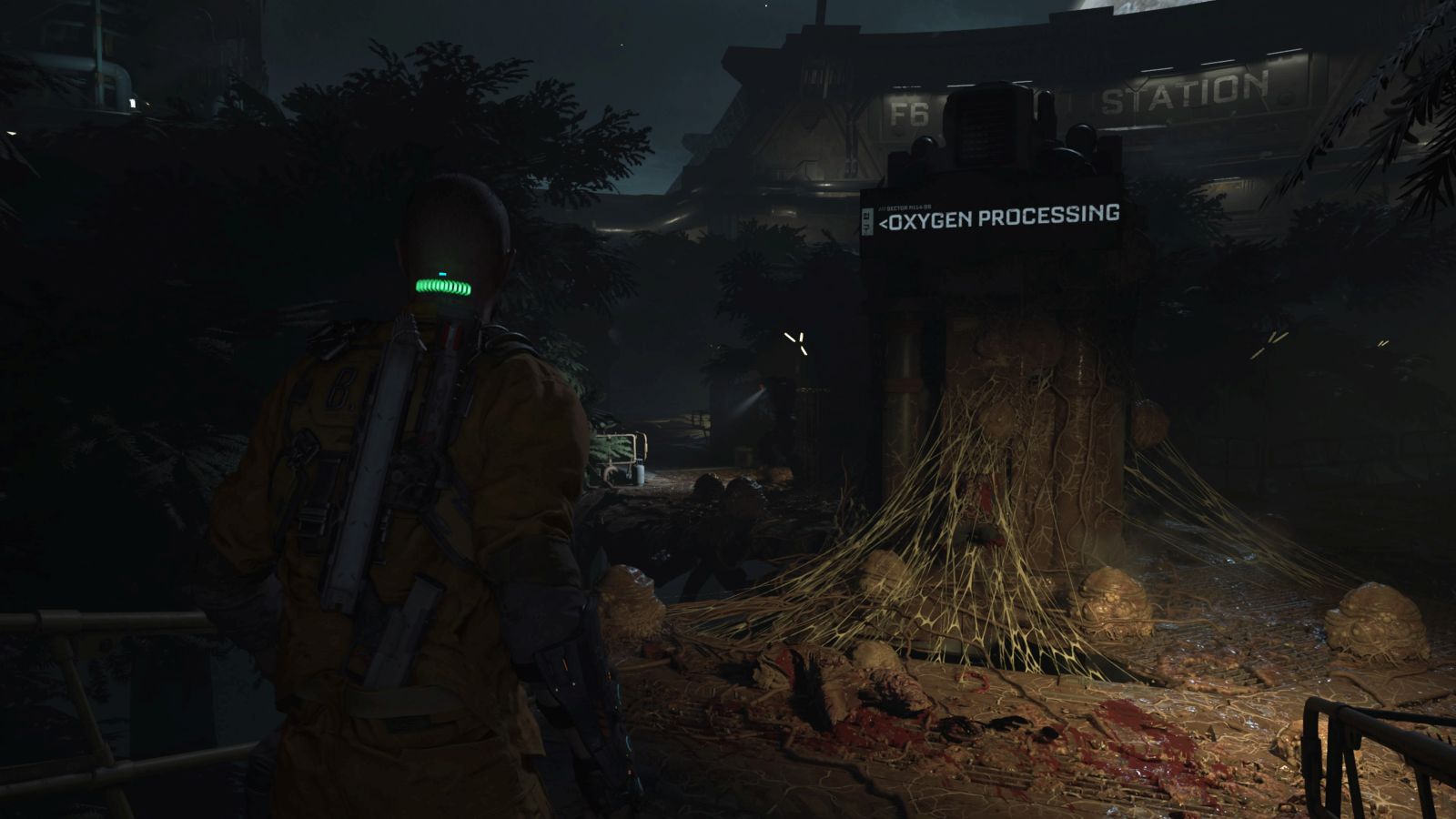
The pacing and gameplay issues are further compounded by the fact that it is nearly impossible to tactically clear a room as multiple enemies will only trigger once you cross a certain threshold. I get that they travel through vents and walls, but it is disheartening when you spend a long-time planning and picking off enemies from afar only to think you are safe and then get mobbed by enemies that came from essentially nowhere. This was especially frustrating in an area where I was on high ground and believed I could see all enemies below me, so I picked them off individually and then descended the ladder – only to turn around and be greeted by three enemies who were not there when I began my short descent. These instances are never game breaking but do make it seem nearly pointless to try to strategize when ultimately the game is going to throw stuff at you that you cannot prepare for anyway.
As you defeat enemies and explore, you will find a variety of pickups, including Callisto credits, health packs, and ammo. Callisto credits can be used at the upgrade stations you will find scattered throughout the prison, which allow you to upgrade your weapons or GRP and to stock up on health and ammo. The upgrade stations function as 3D printers, immediately reconstructing your weapons in front of you or drawing an ammo box for you to carry. The upgrade system is fun and allows you to tweak to your specific playing style. I would highly recommend focusing on a few key weapons rather than attempting to upgrade all possible weapons, as I found having a fully upgraded gun is more important than having five slightly upgraded weapons.
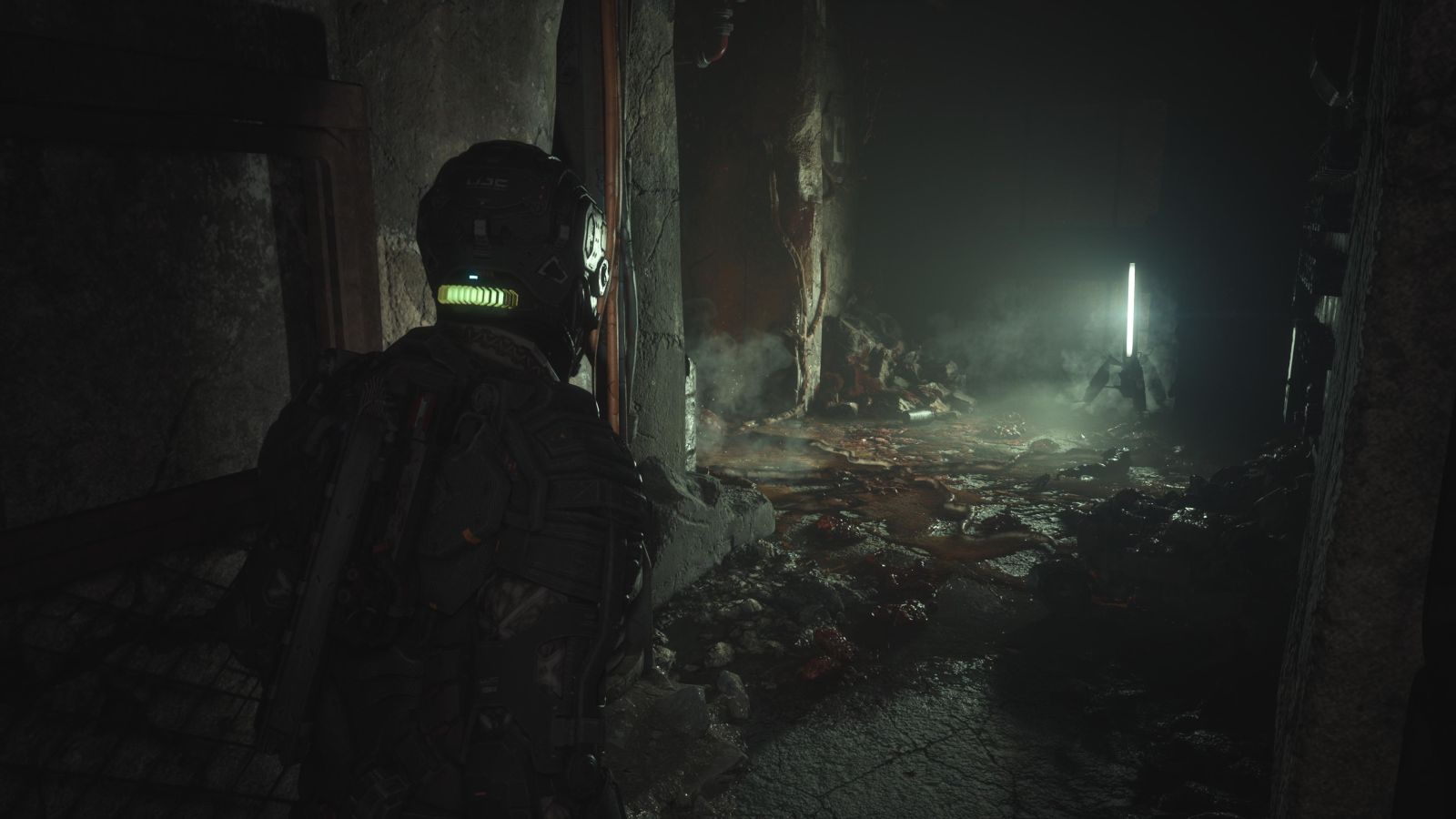

Managing your inventory is paramount to success, and in true survival horror fashion, Jacob can hold an incredibly small number of items at any given time. While later in the game your inventory expands, it still never seems to be large enough to hold all your ammunition, health items, and valuables. I eventually found myself running back to upgrade machines to sell my extra items just so I would not constantly have to leave items on the ground. I suppose for players who opt to fire their weapons often this will not be as much of a problem, as ammo can quickly fill up your allotted inventory spaces.
The Callisto Protocol is actively being updated to fix a bevy of problems that the game had upon launch, and while I was reviewing the game I downloaded a 10 GB update. While I am not sure what that specific update fixed, I will say that I rarely had any issues of real significance during my playthrough on the PS5. There were a few instances of floating body parts, or enemies disappearing, but nothing game breaking and barely any of the stuttering that many PC players have experienced. The game ran well on the PS5, only stuttering during very intense scenes near the end – but even then, it was short lived and did not actually affect gameplay. I may have complaints about the game, but performance was not one of them.


Two areas where The Callisto Protocol shines is in the graphical and sound departments. Despite its dark and often disgusting setting, Protocol constantly impresses with its realistic graphics, incredible character and enemy models, realistic lighting, and fantastic sound design. Protocol also makes great use of the PS5 controller, using it as a speaker for when Jacob is being spoken to by other characters or for particularly tense moments.
There is no New Game+ mode currently, but my understanding is that developers are actively working on one. I do believe the game has a good bit of replayability thanks to the various difficulty levels and a decent amount of audio logs to find and listen to. While the audio logs were not as informative as I had hoped, they do give you something to seek out and a reason to explore all the nooks or the larger set pieces. Adding New Game+ into the mix would make me far more likely to replay the story, as I could work on fully upgrading my entire arsenal and spend more time experimenting with the various weapons at my disposal.
Overall, despite my grievances, I had a good time with The Callisto Protocol. It may not be as similar to Dead Space as many had hoped, but it does have its own charm. Still, it was never fair for players to expect Dead Space 2.0, and that was on us for building up Protocol to be something it never intended to be. On its own merits Callisto Protocol is a fairly unique experience. The gorgeous graphics and unique battle system help the game stand out, and its relatively short length may push people to replay on higher difficulties.
The Callisto Protocol
Good
The Callisto Protocol is a unique and often good game which is hindered by its own ambition. The fighting system is sure to be hit and miss with audiences, and the difficulty coupled with the slow movement and weapon swapping will surely turn a few people off. Despite this, Protocol builds a unique world that would benefit from further entries diving more into its backstory and is brought to life with incredibly detailed graphics, fantastic sound design, and gorgeous lighting. The Callisto Protocol may not be the survival horror game many had hoped for, but it does successfully carve out its own niche.
Pros
- Incredibly detailed graphics
- Tense setting and atmosphere
- Fantastic sound design
Cons
- Grows repetitive
- Sluggish movements hamper the flow of fights
- A few glitches
